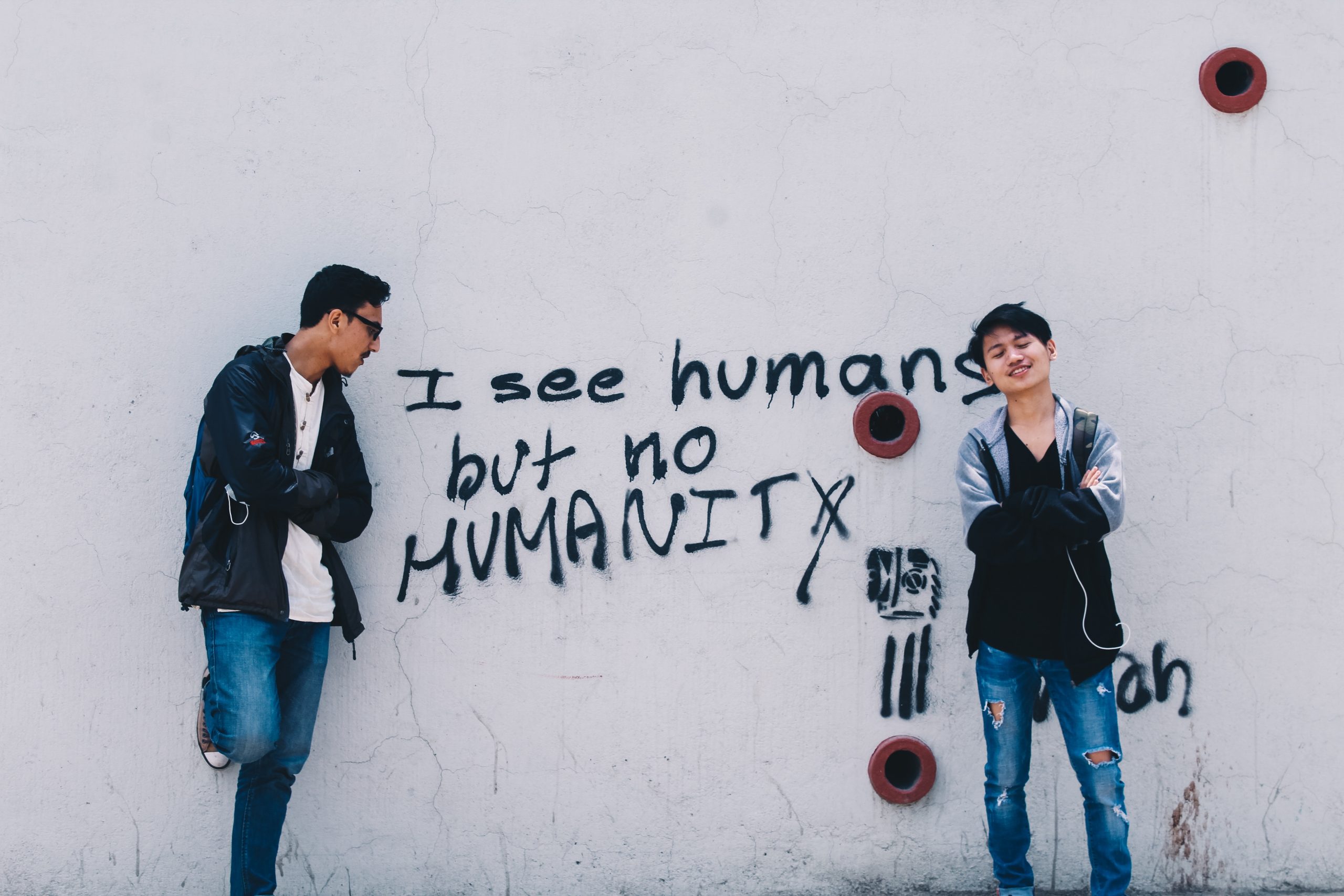Module 1. The Significance of Ethnic Studies
RACE-ETHNIC RELATIONS TODAY
At present, people of color are now more than 80% of the world’s population and becoming the demographic majority (Feagin, 2014). The U.S. population is more diverse than ever in its history, and it is projected that by the year of 2040 Whites will become the statistical minority in the United States. With these demographic changes, Americans of color will become more influential in politics, economics, and increase societal pressure to them with greater equity and justice.
Intergroup relations between racial-ethnic groups are complex. Because racial-ethnic group creation is politically motivated, people of color often experience frustration, anger, and trauma from ongoing conflict, discrimination, and inequality (Farley, 2010). Our race and ethnic heritage shapes us in many ways and fills us with pride, but it is also a source of conflict, prejudice, and hatred.

There are seven distinct patterns of intergroup relations between majority (powerful) and minority (subordinate) groups influencing not only the racial and ethnic identity of people but also the opportunities and barriers each will experience through social interactions. Maladaptive contacts and exchanges include genocide, population transfer, internal colonialism, and segregation. Genocide attempts to destroy a group of people because of their race or ethnicity. “Labeling the targeted group as inferior or even less than fully human facilitates genocide” (Henslin, 2011, p. 225). Population transfer moves or expels a minority group through direct or indirect transfer. Indirect transfer forces people to leave by making living conditions unbearable, whereas direct transfer literally expels minorities by force.
Another form of rejection by the dominant group is a type of colonialism. Internal colonialism refers to a country’s powerful dominant group exploiting the low-status, minority group for economic advantage. Internal colonialism generally accompanies segregation (Henslin, 2011). In segregation, minority groups live physically separate from the dominant group by law.
Three adaptive intergroup relations include assimilation, multiculturalism, and pluralism. The pattern of assimilation is the process by which a minority or less powerful group assumes the attitudes and language of the dominant or mainstream culture. An individual or group gives up its identity by taking on the characteristics of the dominant culture (Griffiths et al., 2015). For example, the original language, cultures, and family ties of African Americans were destroyed through slavery, and any wealth or resources gained since have been challenged or taken through White-on-Black oppression. When minorities assimilate by force to dominant ideologies and practices, they can no longer practice their own religion, speak their own language, or follow their own customs. In permissible assimilation, minority, low-status groups adopt the dominant culture in their own way and at their own speed (Henslin, 2011).
Multiculturalism is the most accepting intergroup relationship between the powerful dominant and subordinate minority. Multiculturalism or pluralism encourages variation and diversity. Multiculturalism promotes affirmation and practice of ethnic traditions while socializing individuals into the dominant culture (Kottak & Kozaitis, 2012). This model works well in diverse societies comprised of a variety of cultural groups and a political system supporting freedom of expression. Pluralism is a mixture of cultures where each retains its own identity (Griffiths et al., 2015). Under pluralism, groups exist separately and equally while working together such as through economic interdependence where each group fills a different societal niche then exchanges activities or services for the sustainability and survival of all. Both the multicultural and pluralism models stress interactions and contributions to their society by all ethnic groups.

Intergroup conflict has many social and political consequences affecting the life of every American (Farley, 2010). The most unsettling aspect is the inability or unwillingness of Whites to see and understand the racist reality in the United States. Many Whites continue to deny histories of racism, believe racism is a thing of the past, and do not acknowledge contemporary racial framing and discrimination (Feagin, 2014). Whites perpetuate the ideology of “intergroup conflict and relations” to establish the perception that all racial groups have equal impact or resources. This corroborates an image of a level playing field among all racial groups rather than the reality of a White-dominated and controlled systemic structure. To give an example, for over four centuries African Americans have been subordinated and exploited for their labor. Racial oppression has reinforced anti-Black practices, political-economic power of Whites, racial and economic inequality, and racial framing to legitimize White privilege and power in economic, political, legal, educational, and other institutions (Feagin, 2014).
People of color experience the social world differently from Whites. The life chances and opportunities for Americans of color are restricted in many ways, such as, who they can marry, where they can live, what they wear or eat, who is a member of their school’s student body, what curriculum and instruction they receive, what jobs or careers they can obtain, how they pray, who they pray to, who represents their political interests, and what, if any, healthcare they receive (Feagin, 2014). The institutions and services that are readily available to Whites are not the same or always accessible for Americans of color. The few opportunities gained by some people of color because of circumstance or chance, does not mitigate the inequities and injustice most Americans of color live and experience. The White majority speaks about equality but does not practice it across racial groups. Unaddressed inequities result in continued turmoil between the majority and minority groups in the United States.
APPLICATION 1.3
LEADERSHIP THROUGH INTERGROUP DIALOGUE
Goal
To recognize the skills needed to successfully lead or be part of a diverse team.
Instructions
- Listen to perspectives on intergroup dialogue from students at Syracuse University.
- Review quotes from “Bridging Differences Through Dialogue” by Ximena Zúñiga.
- “Intergroup dialogue is face-to-face facilitated conversation between members of two or more social identity groups that strives to create new levels of understanding, relating, and action.”
- “Intergroup dialogue encourages direct encounters and exchange about contentious issues, especially those associated with issues of social identity and social stratification” (the hierarchy or division of society based on status, rank, or class).
- “Dialogue that build dispositions and skills for developing and maintain relationships across differences and for taking action for equity and social justice.”
- Read the following article:
Nagada, B. (Ratnesh) A. (2019). Intergroup dialogue: Engaging difference for social change leadership development. New Directions for Student Leadership, 2019(163), 29-46. - Identify and create a list of skills someone can develop by facilitating and participating in intergroup dialogue.
